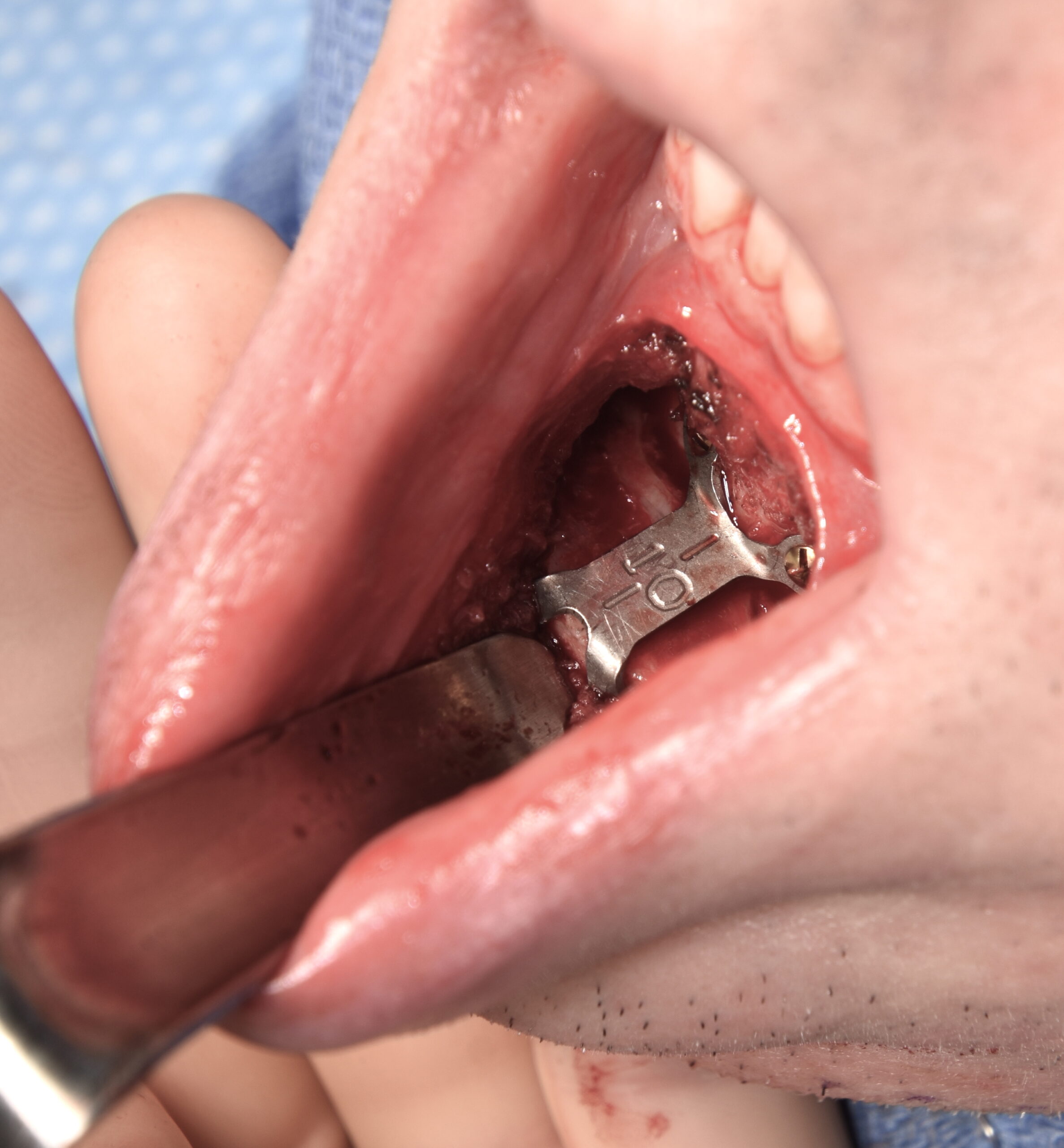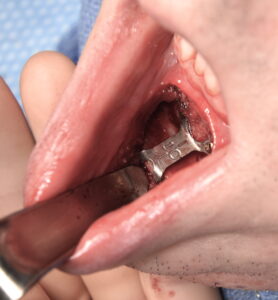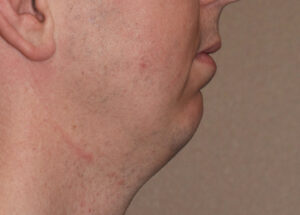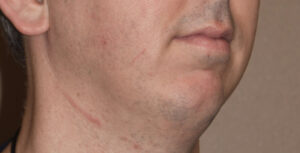Background: There is a classic debate that occurs in chin augmentation as to whether it should be done by an implant or moving the chin bone. There are a lot of factors that go into that decision for each patient from an emotional preference to cost and recovery. But all of those issues aside one factor that is frequently overlooked, and is the most important one, are what are the exact dimensional changes that the chin augmentation needs for the patient to achieve a satisfactory result.
The two chin augmentation operations may appear to create the same effect in side/profile view but may have different effects in other views. Vertical dimensional changes of any magnitude are better done with a sliding genioplasty while the need for width maintenance/increase can only be done by an implant. As a general rule when the horizontal chin augmentation needs become 10mms or greater a sliding genioplasty has a lower risk of potential complications…provided one can accept a slight narrowing effect from the front view.
Case Study: This middle aged male presented for lower facial reshaping with a short chin and very obtuse cervicomental angle. He had been insecure about his lower facial appearance his whole life. The key preoperative questions were how much augmentation was acceptable and what would be the best management approach to his neck. (liposuction vs submentoplasty vs lower facelift) This is where the role of computer imaging is helpful in both determining what type of dimensional changes of the chin looks good to the patient and what the differences would be in the three types of neck reshaping.
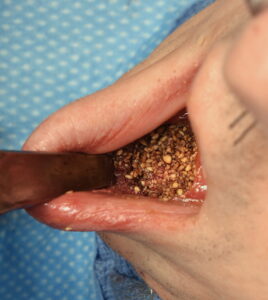

Case Highlights:
1) Large chin augmentations at almost any age may be better done by moving the chin bone which is associated with a lower risk of complications than an implant in experienced hands.
2) In determining how much chin augmentation is acceptable in ‘older’ patients computer imaging can avoid an overdone result which may be difficult for the patient to accept at their age.
3) To prevent or soften the natural deepening of the labiomental fold that occurs in larger sliding genioplasties tissue bank bone chips provide a good fill of the bony stepoff.
Dr. Barry Eppley
Indianapolis, Indiana

